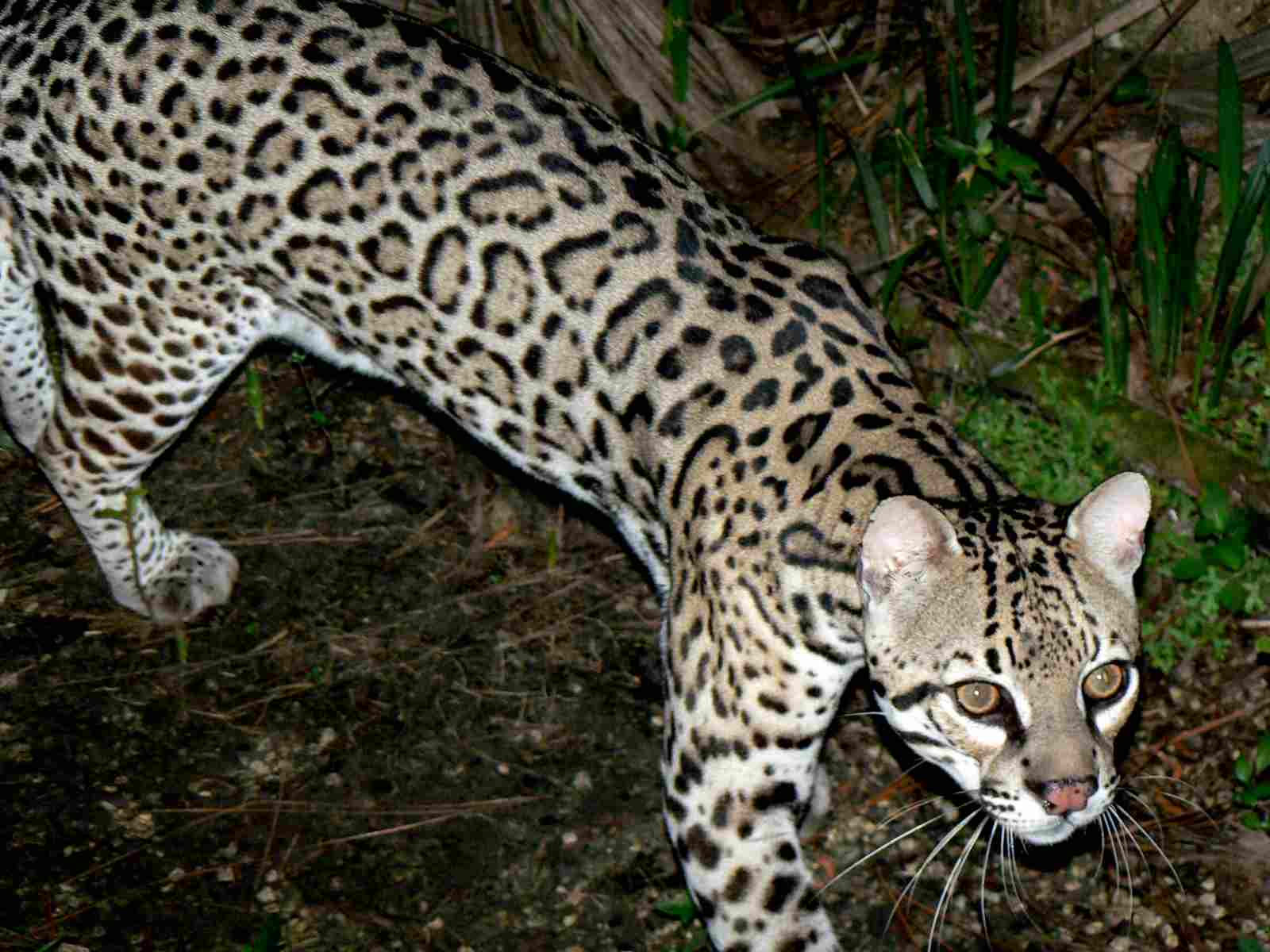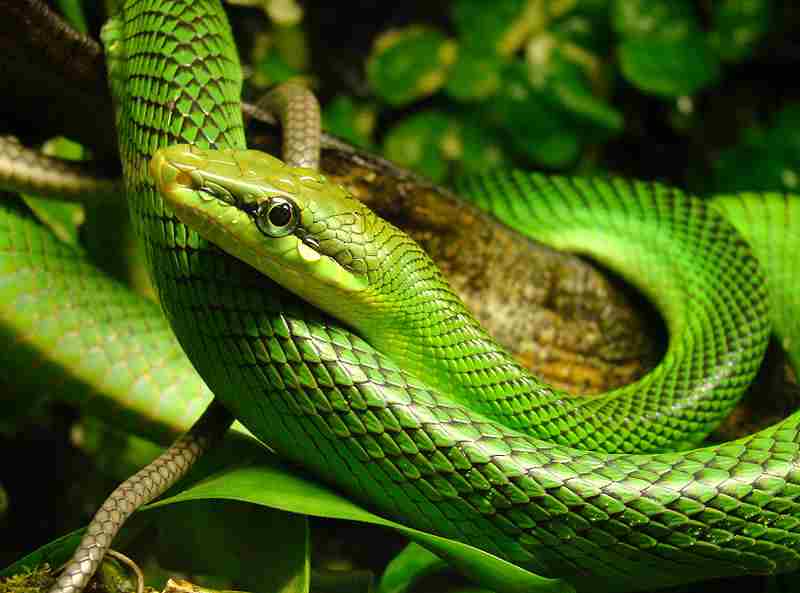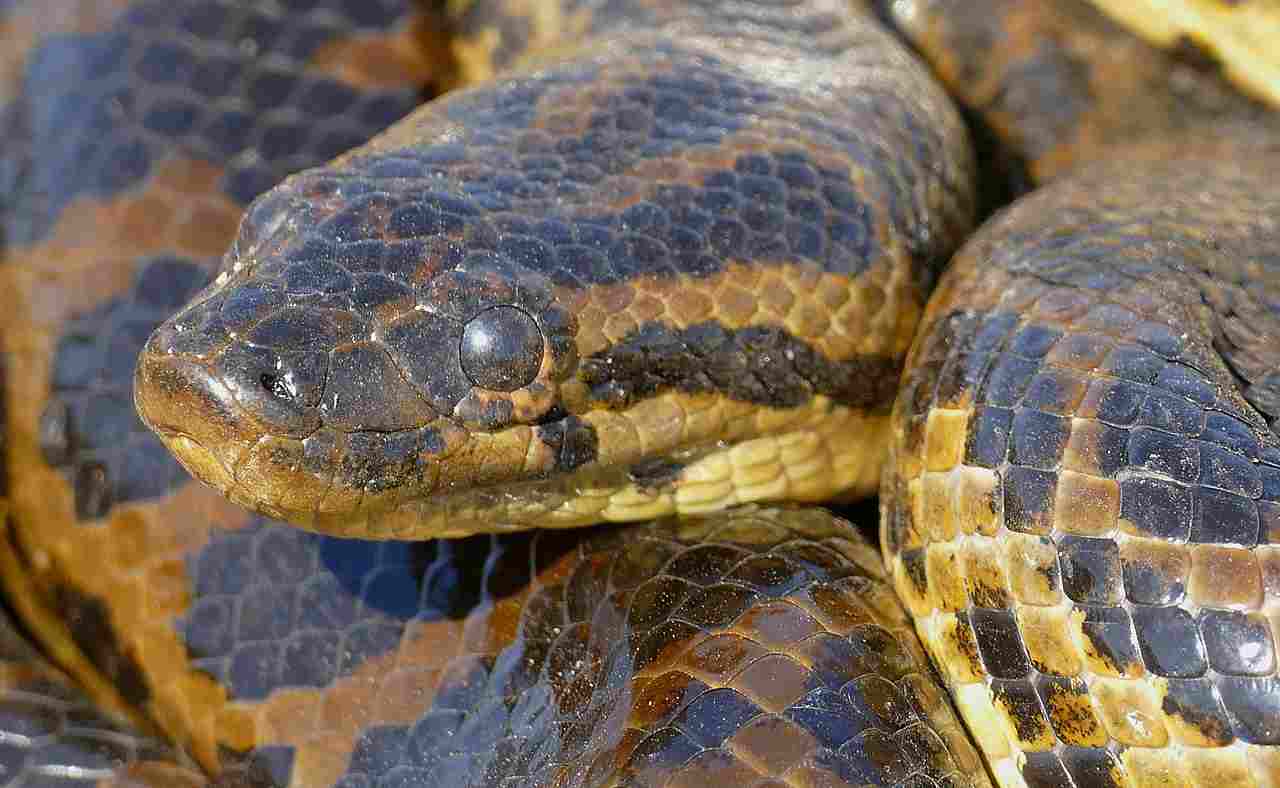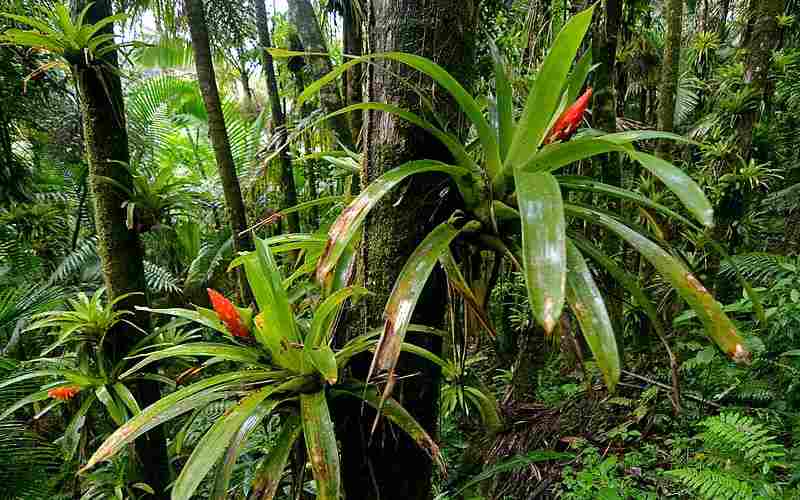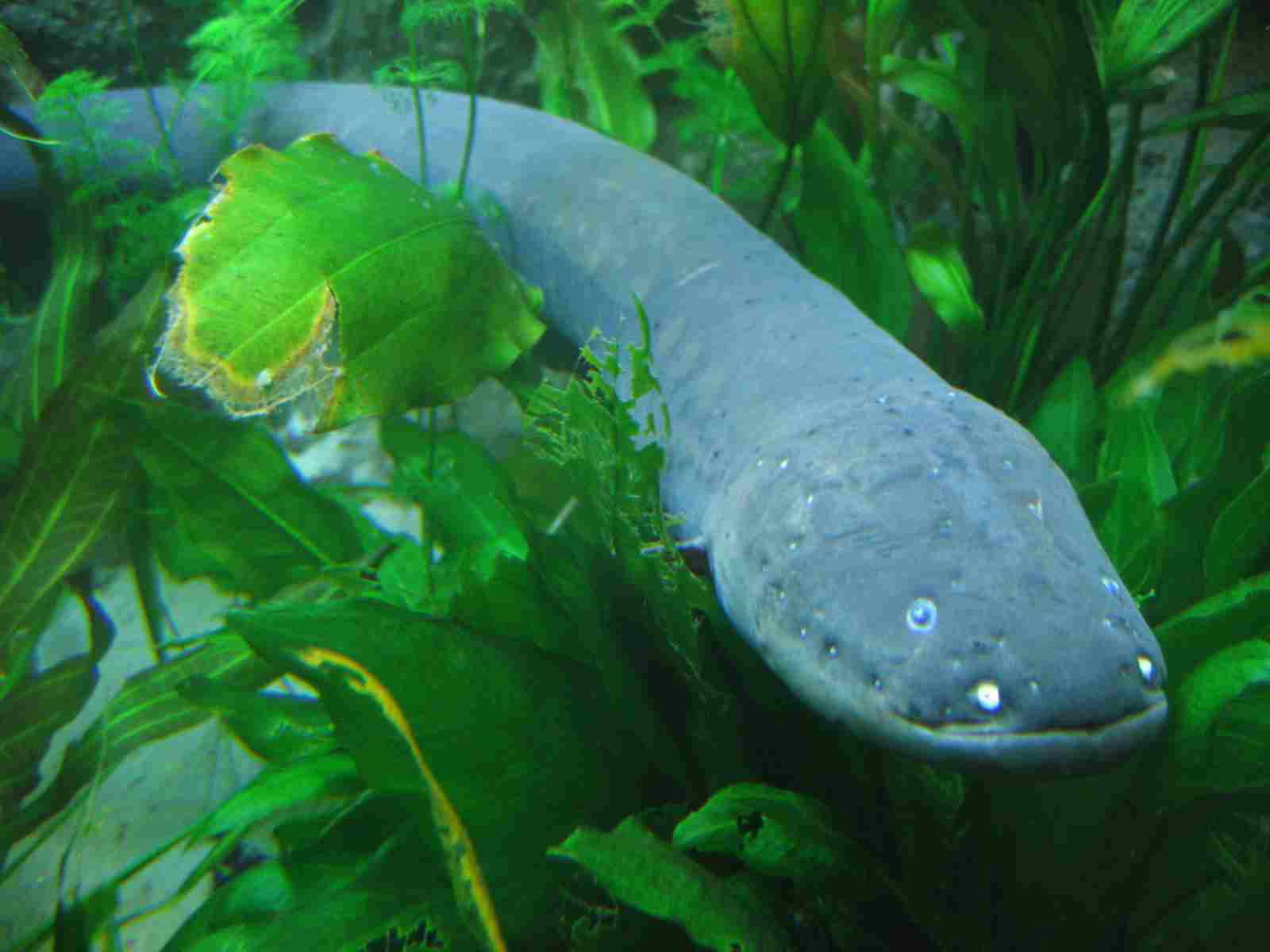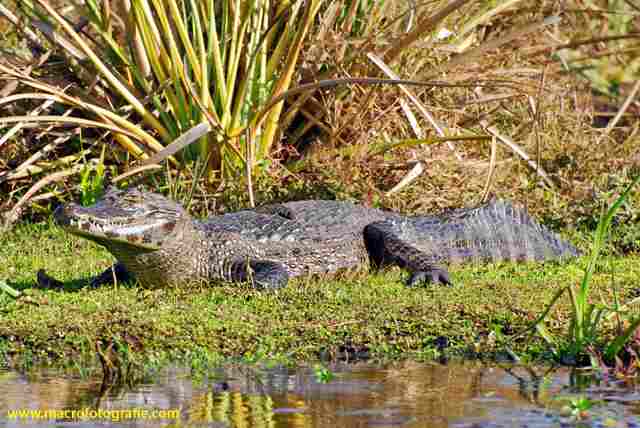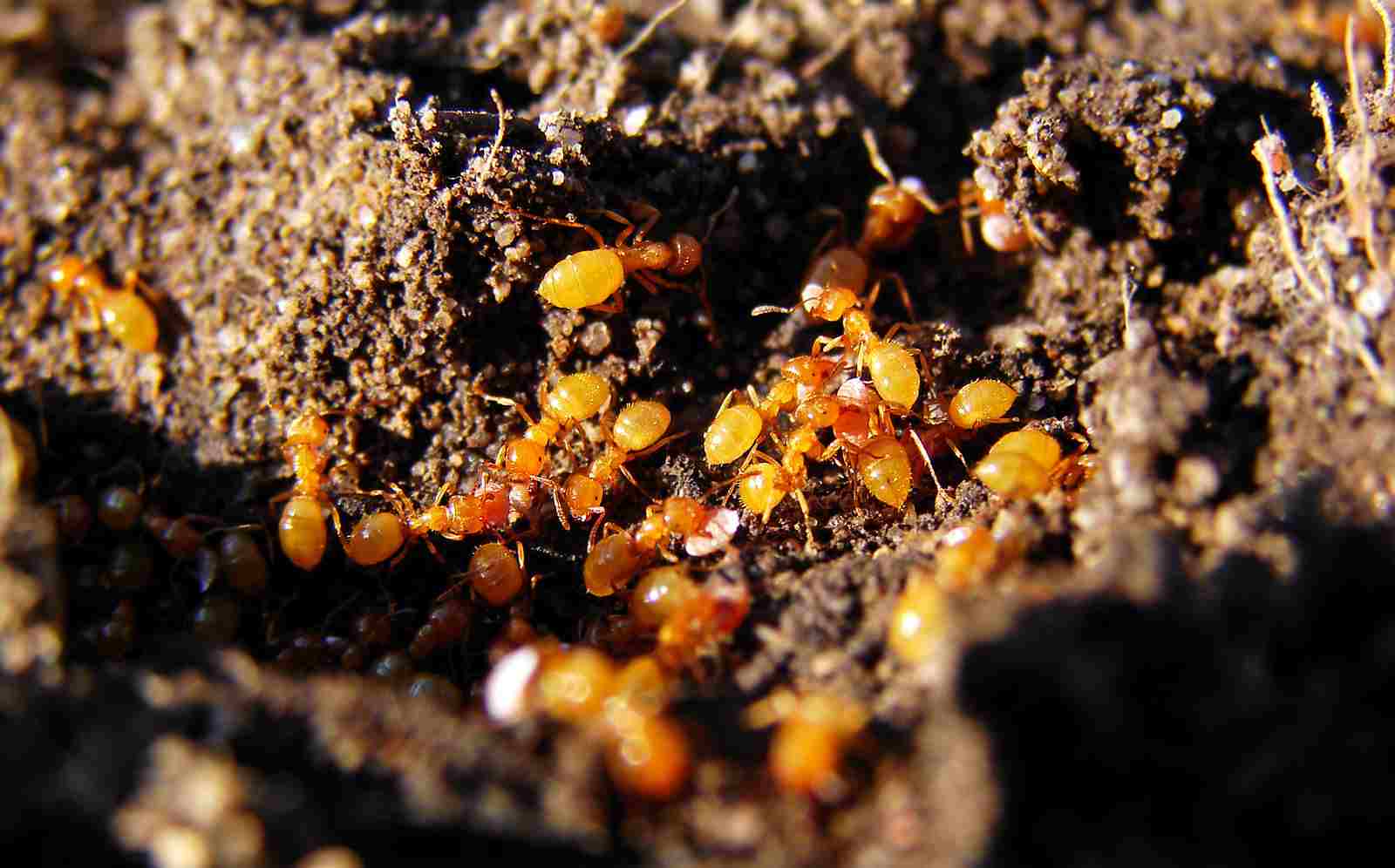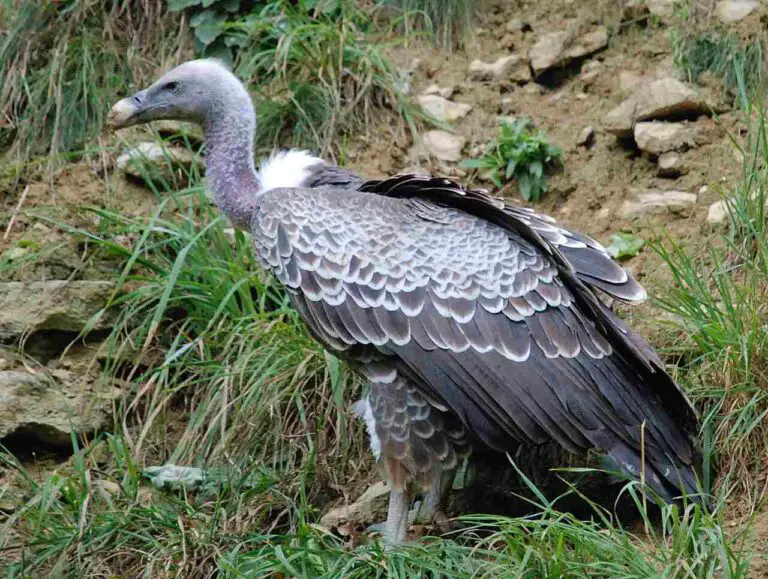23+ Most Dangerous Animals In The Amazon Discussed
The most dangerous animals in the Amazon include the jaguar, anaconda, black caiman, and fer-de-lance, which are apex predators with formidable physical attributes. Other notable threats are the electric eel, piranhas, bullet ants, and various poison dart frogs, each with unique defense mechanisms or predatory skills. Venomous and aggressive creatures like the Brazilian wandering spider, assassin bug, and bushmaster snake add to the dangers in the Amazon rainforest. While some, like the giant river otter and army ants, are dangerous due to their aggressive nature, others, such as the Amazonian giant earthworm, might be alarming due to their large size but generally pose no direct threat to humans.
1. Jaguar
The jaguar (Panthera onca) is the largest cat in the Americas and one of the most powerful predators in the Amazon Rainforest. Known for its distinctive rosette-patterned coat and formidable strength, this apex predator has a bite force that can crush the skulls of its prey and even pierce the tough shells of turtles. Jaguars are highly adaptable, hunting both on land and in water, and they prey on a wide variety of animals, including deer, capybaras, tapirs, and caimans. Despite their fearsome reputation, jaguars are generally elusive and tend to avoid human settlements, but they are still regarded as one of the most dangerous animals in the Amazon due to their stealth, power, and aggressive hunting tactics.
2. Anaconda
The green anaconda (Eunectes murinus) is the largest snake in the world by mass and one of the most formidable predators in the Amazon. These massive constrictors can grow over 20 feet in length and weigh hundreds of pounds. They are well-adapted to their aquatic environment, often lurking in rivers and swamps, waiting to ambush their prey. Anacondas primarily prey on large mammals, such as capybaras and deer, but they can also take on caimans and other large reptiles. Once they capture their prey, they constrict it with immense strength, suffocating it before swallowing it whole.
3. Black Caiman
The black caiman (Melanosuchus niger) is the largest predator in the Amazonian waterways, capable of growing over 16 feet in length. This fearsome crocodilian has a dark, nearly black skin that helps it blend into the murky waters where it resides. With powerful jaws and a carnivorous diet, the black caiman preys on fish, birds, mammals, and even other reptiles. Its size and strength make it a top predator, and encounters with humans can be dangerous, especially in remote areas where it may view humans as potential threats or prey.
4. Electric Eel
The electric eel (Electrophorus electricus) is a unique predator in the Amazon, capable of generating powerful electric shocks to stun or kill its prey. Despite its name, it is more closely related to catfish than eels. The electric eel can generate electricity in varying voltages, with some shocks reaching up to 600 volts—enough to incapacitate a human. It uses this electrical ability for both hunting and self-defense, often in murky waters where visibility is limited. While generally not aggressive toward humans, the electric eel’s powerful shocks can be dangerous if encountered in the wild.
5. Piranha
Piranhas are small, carnivorous fish known for their sharp teeth and aggressive feeding behavior. The most notorious species in the Amazon is the red-bellied piranha (Pygocentrus nattereri), which is famous for its feeding frenzies when food is scarce. Despite their fearsome reputation, piranhas are more scavengers than predators, and they rarely attack humans without provocation. However, their razor-sharp teeth can cause serious injuries, and in some cases, a group of piranhas can strip a large animal to the bone within minutes. Piranhas are a symbol of the Amazon’s raw power and are respected by locals for their potential danger.
6. Bullet Ant
The bullet ant (Paraponera clavata) is renowned for having one of the most painful stings in the insect world, described as being like a gunshot, hence its name. Found in the rainforests of the Amazon, these large ants are generally about an inch long and live in colonies high in the forest canopy. Their venom contains a potent neurotoxin that causes excruciating pain, which can last for several hours or even a day. Although bullet ants are not typically aggressive, they will sting to defend their territory, making them a significant hazard for anyone who inadvertently disturbs their nests.
7. Poison Dart Frog
Poison dart frogs are small amphibians known for their vibrant colors and potent toxins. The golden poison dart frog (Phyllobates terribilis) is considered one of the most toxic animals in the world, with enough venom to kill several humans. These frogs derive their toxicity from their diet of ants and other insects in the wild. While their bright colors serve as a warning to potential predators, humans who handle them can also be at risk of poisoning. Native tribes in the Amazon have historically used their venom to coat the tips of blowgun darts for hunting, a practice from which these frogs get their common name.
8. Brazilian Wandering Spider
The Brazilian wandering spider (Phoneutria spp.) is one of the most venomous spiders in the Amazon and is known for its aggressive behavior. Unlike most spiders, which build webs to catch prey, wandering spiders are active hunters that roam the forest floor and vegetation in search of insects and small vertebrates. They are fast and agile, and their venom contains a potent neurotoxin that can cause severe pain, paralysis, and, in some cases, death if left untreated. These spiders often hide in dark places, increasing the risk of accidental encounters with humans.
9. Fer-de-Lance (Bothrops atrox)
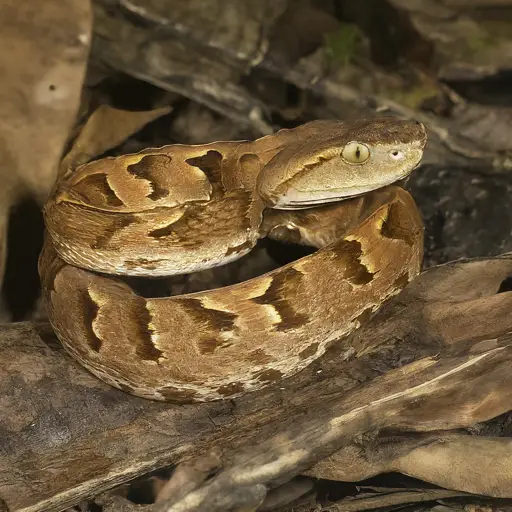
The Fer-de-Lance, also known as Bothrops atrox, is one of the most dangerous snakes in the Amazon, responsible for a large percentage of snakebite incidents in the region. This venomous pit viper is aggressive and highly venomous, with venom that can cause severe tissue damage, internal bleeding, and even death if not treated promptly. Found in various habitats across the Amazon, from rainforests to farmland, the Fer-de-Lance is a master of camouflage, which makes it easy to accidentally encounter in the wild. Its aggressive nature and potent venom make it a significant risk for locals and visitors alike.
10. Giant River Otter
The giant river otter (Pteronura brasiliensis) is the largest species of otter and a formidable predator in the Amazon’s waterways. While generally not a threat to humans, these otters are highly territorial and can be aggressive when defending their family groups and territories. They are excellent swimmers and hunters, preying on fish, crustaceans, and small reptiles. Giant river otters are known for their cooperative behavior and loud vocalizations, which they use to communicate within their family groups. Although they are generally not dangerous to humans, an encounter with a defensive group of giant river otters can be risky.
11. Green Anaconda
The green anaconda (Eunectes murinus) is one of the largest and most formidable snakes in the world, with the potential to grow over 20 feet in length and weigh several hundred pounds. As a constrictor, the green anaconda wraps its body around its prey, suffocating it before swallowing it whole. This massive snake is well-suited to its aquatic environment, lurking in rivers, swamps, and flooded forests. Although it is not typically aggressive toward humans, encounters can be dangerous due to the snake’s immense strength and size, especially if it feels threatened or is defending its territory.
12. Harpy Eagle
The harpy eagle (Harpia harpyja) is one of the largest and most powerful eagles in the Amazon, known for its striking appearance and formidable talons. With a wingspan of over six feet and powerful legs, the harpy eagle is a top predator, preying on monkeys, sloths, and other large arboreal mammals. Its massive talons can exert tremendous force, allowing it to snatch its prey from the trees with precision and strength. While harpy eagles are generally not a threat to humans, their size and power make them a captivating yet potentially dangerous presence in the rainforest canopy.
13. Assassin Bug
The assassin bug (Reduviidae) is a diverse family of insects that includes some of the most notorious vectors of disease in the Amazon. Among them, the kissing bug (Triatominae) is known for transmitting Chagas disease, a serious illness that can cause long-term heart and digestive system complications. These bugs typically feed on blood, and their bites can be painful and carry the risk of infection. The assassin bug’s stealthy nature and its ability to transmit disease make it a potential threat to humans in the Amazon, requiring caution and preventive measures to avoid contact.
14. Amazonian Giant Centipede
The Amazonian giant centipede (Scolopendra gigantea) is a fearsome predator in the rainforest, capable of growing up to a foot in length. With its multiple segments and long, venomous fangs, this centipede can subdue a wide range of prey, including insects, small reptiles, and even birds. Its venom contains a mix of toxins that can cause intense pain and other severe reactions in humans. While the Amazonian giant centipede generally avoids human contact, it can be aggressive when threatened, and its bite can lead to significant discomfort and, in some cases, require medical attention.
15. Army Ants
Army ants (Ecitoninae) are a group of ants known for their aggressive swarming behavior and nomadic colonies. Unlike many other ant species, army ants do not build permanent nests; instead, they move in large columns, foraging for food and overwhelming any prey in their path. These ants are capable of devouring insects, small vertebrates, and even larger animals when working in massive numbers. While army ants do not typically pose a threat to humans, their sheer numbers and aggressive behavior can be intimidating, and any disturbance of their swarming path can lead to painful bites and potential harm.
16. Candiru (Vampire Fish)
The candiru (Vandellia cirrhosa), also known as the vampire fish, is a small catfish notorious for its parasitic behavior. Found in the Amazon River, this fish is known for its tendency to enter the gills or body orifices of larger fish, where it latches on and feeds on blood. Although the candiru’s reputation as a threat to humans is often exaggerated, there have been rare reports of it entering human orifices, leading to severe pain and potential injury. While the risk of encountering a candiru in this way is low, its reputation has contributed to its status as one of the most feared animals in the Amazon.
17. Bushmaster Snake
The bushmaster snake (Lachesis muta) is the largest pit viper in the Americas and one of the most venomous snakes in the Amazon. It can grow over 10 feet in length and is equipped with heat-sensing pits to detect warm-blooded prey. The bushmaster’s venom is potent, causing severe pain, swelling, tissue damage, and, in some cases, death. This snake is typically nocturnal and reclusive, preferring dense forests and remote areas, but its size and powerful venom make it a significant danger if encountered. Its aggressive nature when disturbed adds to its reputation as one of the most dangerous snakes in the region.
18. Goliath Birdeater Tarantula
The Goliath birdeater (Theraphosa blondi) is the largest species of tarantula and one of the heaviest spiders in the world, with a leg span of nearly a foot. Despite its name, it rarely eats birds, preferring insects, small mammals, and amphibians. While its large size and intimidating appearance may seem dangerous, the Goliath birdeater’s venom is relatively mild, causing localized pain and swelling but generally not posing a severe threat to humans. However, its defensive behavior includes barbed hairs that can cause irritation and discomfort if they come into contact with skin or eyes, making it a spider to avoid in the Amazon.
19. Red-bellied Piranha
The red-bellied piranha (Pygocentrus nattereri) is one of the most notorious species of piranhas in the Amazon, known for its aggressive feeding behavior and razor-sharp teeth. They typically hunt in schools, and when provoked or when food is scarce, they can exhibit a feeding frenzy, capable of stripping a large animal to the bone in minutes. While their reputation for attacking humans is often exaggerated, they can pose a risk if someone enters the water with open wounds or during times of drought when food is limited. The red-bellied piranha’s aggressive nature and sharp teeth make it a formidable predator in the Amazon’s rivers and lakes.
20. Vampire Bat
The vampire bat (Desmodus rotundus) is a small, nocturnal mammal known for feeding on the blood of other animals, typically livestock. Found throughout the Amazon and other regions of Latin America, these bats have specialized teeth and saliva to efficiently extract blood without causing pain to their hosts. While they primarily target animals, there have been instances of vampire bats feeding on humans, potentially spreading diseases like rabies. Though vampire bats play a role in their ecosystems by controlling insect populations, their blood-feeding behavior and potential disease transmission make them a significant risk to livestock and humans in the Amazon.
21. Orinoco Crocodile
The Orinoco crocodile (Crocodylus intermedius) is one of the largest crocodile species in the world, native to the Orinoco River Basin in South America, which includes parts of the Amazon. These massive reptiles can grow over 16 feet in length and are apex predators in their habitats. They primarily prey on fish, birds, and mammals, and their powerful jaws and sharp teeth allow them to take down large prey. Although the Orinoco crocodile is critically endangered and rarely encountered by humans, its size, strength, and predatory nature make it one of the most dangerous animals in the Amazon if encountered in the wild.
22. Golden Poison Frog
The golden poison frog (Phyllobates terribilis) is one of the most toxic animals on Earth, with a single frog carrying enough venom to kill several adult humans. Found in the rainforests of the Amazon, these small, brightly colored frogs secrete powerful toxins through their skin, which serve as a defense against predators. The toxins are derived from their diet, and indigenous tribes have historically used the venom to poison the tips of blowgun darts for hunting. While they are not aggressive and generally avoid humans, the golden poison frog’s extreme toxicity makes it a serious risk to anyone who handles or comes into contact with them in the wild.
23. Blue Poison Dart Frog
The blue poison dart frog (Dendrobates tinctorius) is another highly toxic amphibian found in the Amazon rainforest. Its vibrant blue coloration serves as a warning to potential predators, signaling the presence of potent toxins in its skin. Like other poison dart frogs, its toxins can be harmful to humans if ingested or absorbed through the skin. Though generally not aggressive, these frogs are best admired from a distance due to the risk of poisoning. They are smaller than their golden counterparts but possess similarly potent venom, making them a unique and dangerous aspect of the Amazon’s wildlife.
24. Amazonian Giant Earthworm
The Amazonian giant earthworm (Rhinodrilus fafner) is one of the largest species of earthworms in the world, capable of growing over six feet in length. Although they are not inherently dangerous to humans, their large size and subterranean habitat can lead to unexpected encounters when they surface after heavy rains. They play an essential role in the Amazon’s ecosystem by aerating the soil and aiding in decomposition, but their sheer size can be startling to anyone who comes across them. Despite their lack of aggression or venom, their large appearance can be unsettling and contribute to the sense of awe and mystery in the Amazon rainforest.
| Animal | Description |
| Jaguar |
Apex predator with strong bite force and adaptability.
|
| Anaconda |
Massive constrictor with immense strength.
|
| Black Caiman |
Large crocodilian with powerful jaws.
|
| Electric Eel |
Generates electric shocks to stun or kill prey.
|
| Piranha |
Small carnivorous fish known for feeding frenzies.
|
| Bullet Ant |
Painful sting described like a gunshot.
|
| Poison Dart Frog |
Highly toxic amphibians with potent venom.
|
| Brazilian Wandering Spider |
Aggressive and venomous spider.
|
| Fer-de-Lance |
Venomous pit viper with aggressive behavior.
|
| Giant River Otter |
Large and territorial aquatic mammal.
|
| Green Anaconda |
Massive snake with constricting power.
|
| Harpy Eagle |
Large and powerful raptor with massive talons.
|
| Assassin Bug |
Blood-feeding insects known for transmitting disease.
|
| Amazonian Giant Centipede |
Venomous centipede with aggressive behavior.
|
| Army Ants |
Aggressive swarming ants that devour prey in large numbers.
|
| Candiru (Vampire Fish) |
Parasitic fish known for entering body orifices.
|
| Bushmaster Snake |
Large and venomous pit viper.
|
| Goliath Birdeater Tarantula |
Largest species of tarantula with mild venom.
|
| Red-bellied Piranha |
Notorious piranha with aggressive feeding behavior.
|
| Vampire Bat |
Blood-feeding bat that can transmit diseases.
|
| Orinoco Crocodile |
Large crocodile with predatory nature.
|
| Golden Poison Frog |
Extremely toxic frog with potent venom.
|
| Blue Poison Dart Frog |
Vibrantly colored but highly toxic frog.
|
| Amazonian Giant Earthworm |
Large earthworm contributing to soil health.
|

